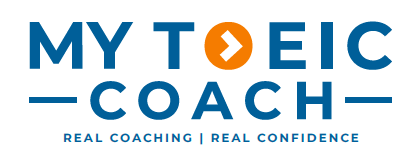🟠 TOEIC Part 5: Mastering Prepositions — in / at / on / by / with / to / for
Prepositions are tiny words with big impact. In Part 5, they’re a favourite way for TOEIC to trip you up — because the wrong choice can make an otherwise perfect sentence incorrect.
Mastering a few core rules for in, at, on, by, with, to, and for will give you quick, consistent points.
📍 in
Used for:
Months / years → in July, in 2024
Enclosed locations / departments → in the office, in HR
📍 at
Used for:
Specific times → at 5 PM
Specific places or events → at the station, at the meeting
📍 on
Used for:
Days / dates → on Monday, on July 1st
Surfaces / platforms → on the table, on the website
📍 by
Used for:
Deadlines → by Friday
Transport / communication method → by car, by email
📍 with
Used for:
Tools → cut with scissors
Features → a man with glasses
Companionship → with a colleague
📍 to
Used for:
Direction / movement → go to the meeting
Giving → send it to the manager
📍 for
Used for:
Purpose → This is for training
Benefit → for the client
Duration → for three years
📝 Sample TOEIC Part 5 Question
The sales figures for the third quarter will be presented ___ the board meeting scheduled for next Monday.
A) in
B) at ✅
C) on
D) by
Why B is correct:
“At” is used for events such as meetings: at the meeting.
“In the meeting” sounds awkward in this context.
“On the meeting” is incorrect.
“By the meeting” would indicate a deadline, not the event itself.
🔄 Quick Recap
in → months, years, enclosed places
at → exact times, events
on → days, surfaces
by → deadlines, transport methods
with → tools, features, people
to → movement, giving
for → purpose, benefit, duration
Final Word
In Part 5, preposition questions are quick wins — but only if you’ve trained your eye to spot the rules instantly. The right choice isn’t about what “sounds okay” — it’s about matching the correct preposition to the meaning.
For more strategies and resources to master TOEIC grammar and vocabulary, visit the English Library Collection and start building accuracy one question at a time.

